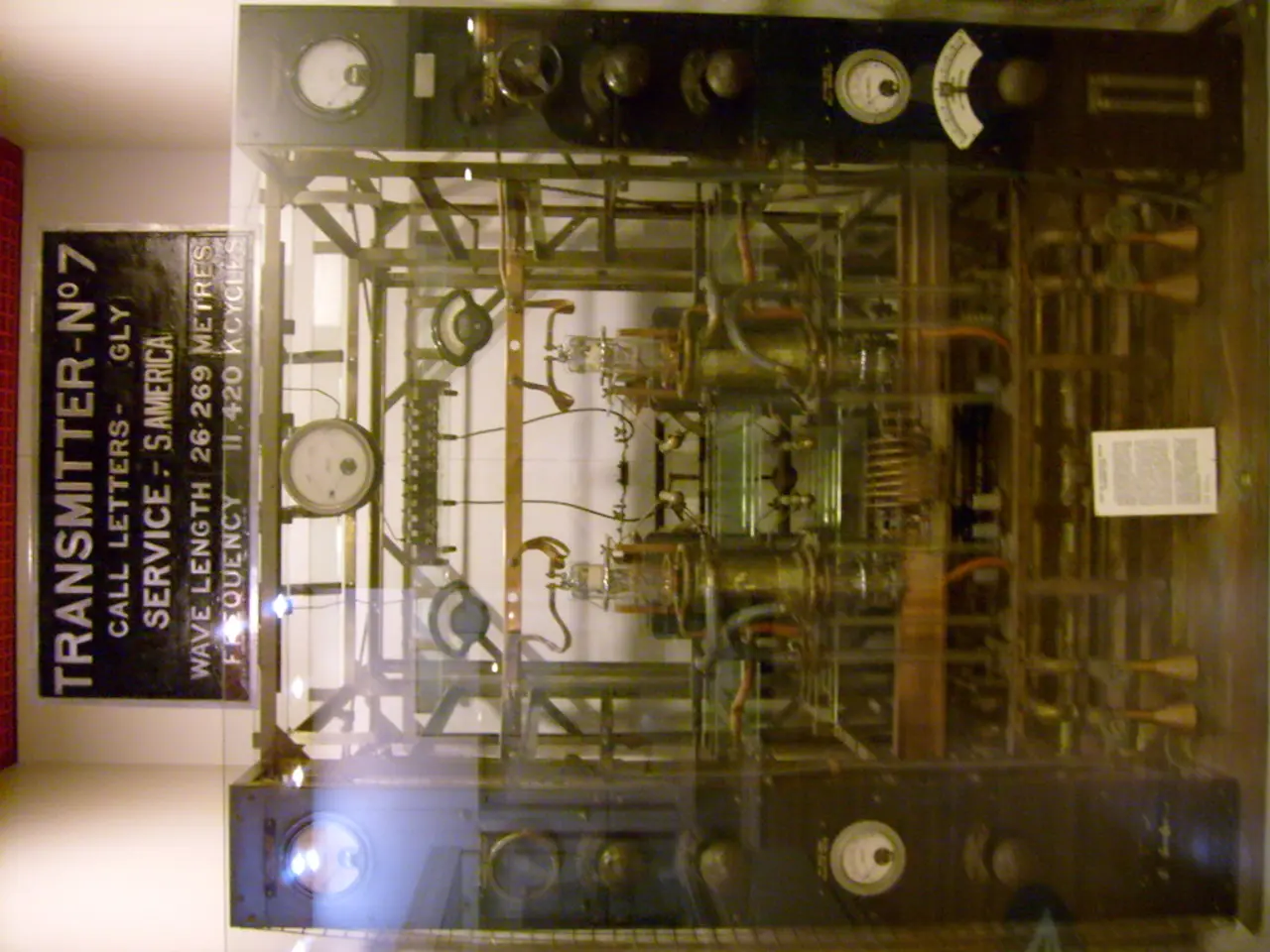Equipment for Quantification
In the vast expanse of the ocean, a network of high-tech instruments, including DART buoys, is working tirelessly to protect coastal communities from the destructive force of tsunamis.
DART (Deep-ocean Assessment and Reporting of Tsunamis) is a system designed to detect and monitor tsunami activity in real-time. It consists of underwater pressure sensors on the ocean floor and surface buoys, which are strategically placed in seismically active regions, particularly the Pacific Ocean [2].
These DART buoys measure pressure changes at the ocean bottom, reflecting passing tsunami waves, enabling early detection of tsunamis after undersea earthquakes or other tsunami-generating events [1][3]. This early warning system allows agencies like NOAA’s Tsunami Warning Centers to update forecasts and issue warnings or advisories that safeguard coastal communities [3].
The DART buoys are complemented by a variety of other instruments. Sea-level stations on land, often in harbors, track tides and wave impacts near coastlines. Emerging concepts like placing pressure sensors at undersea telecommunications cable junctions are also expanding the monitoring networks [1].
Other types of sensors include seismometers on land, global navigation satellite systems (GNSS), and hydrophones. These provide complementary data to help fill the time gap between seismic detection of earthquakes and tsunami wave detection by DART buoys [2].
Together, this network of instruments offers a comprehensive, layered observation of tsunami formation and propagation, improving the speed and accuracy of tsunami warnings and thereby enhancing public safety [3][5].
For instance, buoys can measure the height, period, and direction of waves, as well as their own acceleration. Infrared light systems are used to measure concentrations of suspended sediments, especially silt and mud. Using multibeam and side-scan sonar systems, researchers can take 'photographs' of the seabed and get information about what the seabed surface is made of [1].
Scientists like Dr Rob Bell, who specializes in ocean waves, including storm surges and tsunamis, with a particular interest in sea-level changes, are at the forefront of this research [6]. They use bubbler pressure gauges to measure sea level accurately, with the higher the pressure needed to blow bubbles indicating deeper water [7]. Bubbler gauges are important for detecting tsunamis because they measure sea level at short intervals (1 minute) [7].
The advent of the GPS system started a new era of instruments for the study of waves, combining positional sensing with other measuring instruments [8]. The use of sound waves can reveal the content of the ocean, with the Doppler shift indicating suspended sediment, plankton density, and more [9].
Side-scan sonar is an important technique for mapping the texture of the seabed, and interference patterns caused by sound wave reflections or backscatter can help identify organisms on the seabed, even if they are too small to be picked out on a 500kHz side-scan system [1].
The buoys play a crucial role in alerting the public about potential tsunami waves. Dr Rob Bell, for example, was recently seen beside a DART tsunami buoy, which transmits pressure data from a tethered sea-floor pressure gauge [10].
In conclusion, the network of DART buoys and other instruments is a powerful tool in the fight against tsunamis. By providing real-time measurements of ocean conditions that signal tsunami activity, these instruments are helping to save lives and protect coastal communities.
- Scientists studying climate-change and environmental-science are finding new ways to integrate technology into their research, such as using DART buoys for tsunami detection and monitoring.
- The advancement in technology and data-and-cloud-computing has also impacted sports-betting, with bookmakers and predictive analytics teams using smartphones and gadgets to analyze patterns and make accurate predictions.
- Meanwhile, environmental scientists are evaluating the impact of underwater pressure sensors on the marine ecosystem, including the potential effects on seabed organisms and undersea telecommunications cable junctions.
- Concurrently, researchers are exploring the use of computer simulations and modeling in various fields, from predicting weather patterns to improving sports training techniques through smartphone applications and harnessing the power of real-time data.




